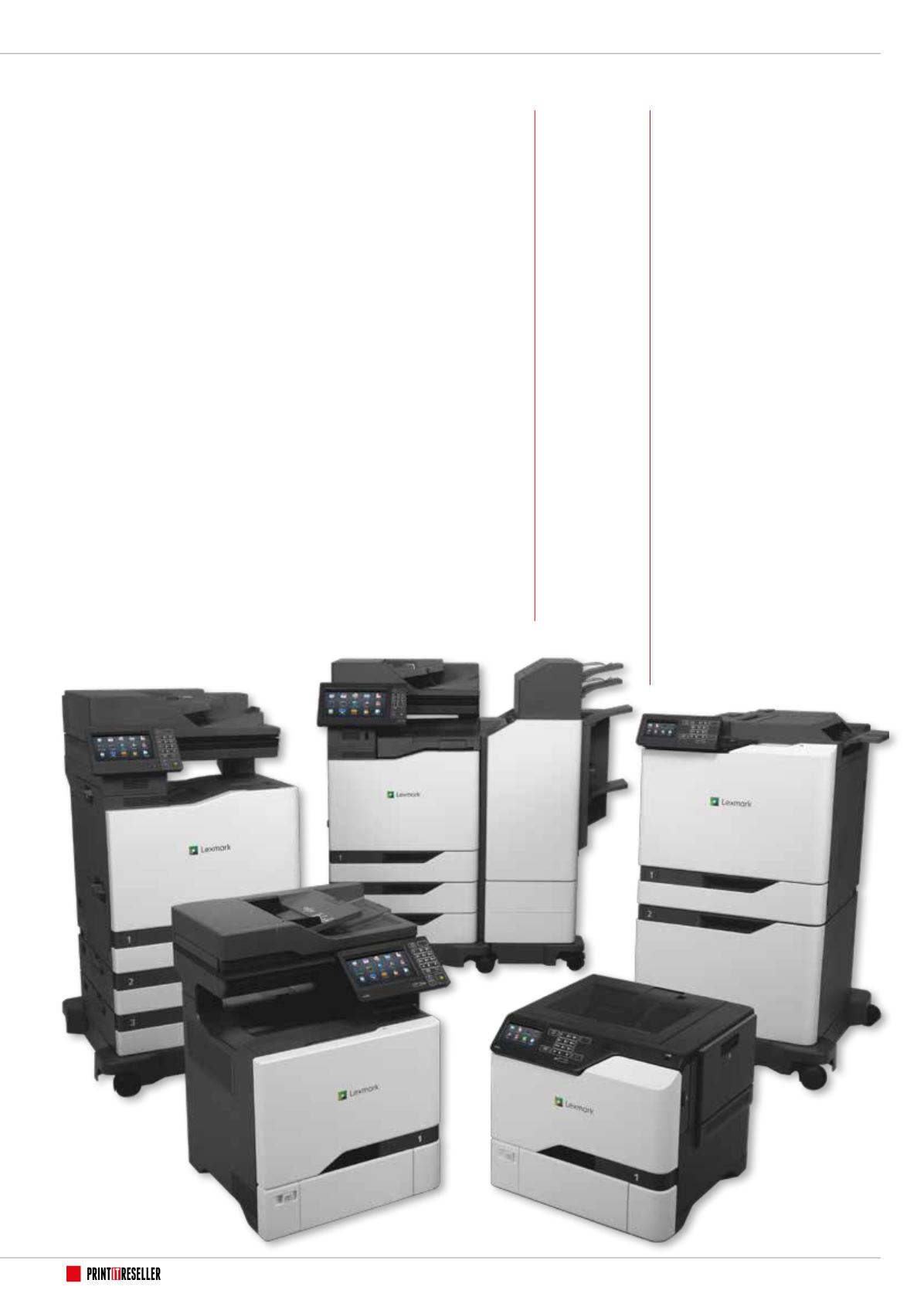
01732 759725
ACQUISITION
36
the past few years is to strengthen that
proposition with software that you can’t
develop from scratch. In certain cases
you need to work together with other
companies and in others it makes sense to
buy these companies. In the last couple of
years, the tendency has been more towards
acquisition; I think the tendency today is to
look for partnerships.
PITR:
In the UK specifically, what are
your big growth areas?
DM:
Lexmark has always been vertically
organised. We’ve always been very strong
in the retail area; we’ve always been very
focused on banking and manufacturing; and
where we see a growth area for us going
forward is in government and healthcare.
From the acquisitions we’ve done in the
past, we have developed some very good
solutions, particularly in the healthcare
space, so we’ve also been very busy over
the last two years making sure that Lexmark
is on government frameworks. That’s really
working out for us at the moment.
We are also interested in the SMB
space, and we have given our partners
the ability to download certain software
solutions that they can bring into the SMB
space at the right price.
I’m not trying to be the cheapest in
the marketplace; I know I can deliver
certain value. There is a lot of demand in
the government space and the healthcare
space to tie things together, to print less,
to look at security, all the usual things. We
have great products, great solutions and
great partners as well.
PITR:
Is the proportion of your
revenue that comes from hardware
going down?
DM:
We’re currently putting a lot of
investment into our partners to try to
get hardware out there, so hardware is
growing rapidly. Having said that, I don’t
really see a decline on the software side,
because almost all the revenue that we
make today is contractual business.
It depends a little bit on the type of
deal or the customer requirements. A few
months ago I did some analysis because
I was very interested in how the pie split
up. It is an extreme example, but in a
worldwide deployment for a bank, 65%
of the contract value related to software
and 35% to hardware, consumables and
break-fix services. This is not standard for
the market, but as far as I can see, in every
single deal there is an element of services
and a lot of these services consist of
software. So, I think that is growing within
the marketplace and I don’t see it going
down.
Of course, 65% is very high. Not every
customer is ready for that, because at the
end of the day these kinds of service come
with a price.
PITR:
Overall though, the transition
appears to be happening quite slowly.
DM:
I think it’s slower than a lot of people
expected 10 years ago. Fifteen years ago
the product was used to print, but today
Lexmark and some competitors deliver so
many value adds with those boxes that
you don’t just use that box for print; you
use it for many other things. It’s still an
output device, but it's also part of an IT
infrastructure and part of a process.
A simple example is expenses. In the
old days, I did my expenses in an Excel
spreadsheet with all my receipts stapled to
it. Today, we have apps on our devices; you
go over to a device, you identify yourself
with the same card you use to enter the
building; you push the expenses app; you
start throwing your invoices on there and
all this cool stuff happens automatically; it
is routed through the IT infrastructure and
ends up with my boss who, with a little bit
of luck, will approve my claim. This is a very
simple thing. The opportunities we have to
simplify processes and get rid of paper are
endless.
We have
given our
partners the
ability to
download
certain
software
solutions
that they
can bring
into the
SMB space
at the right
price
...continued


